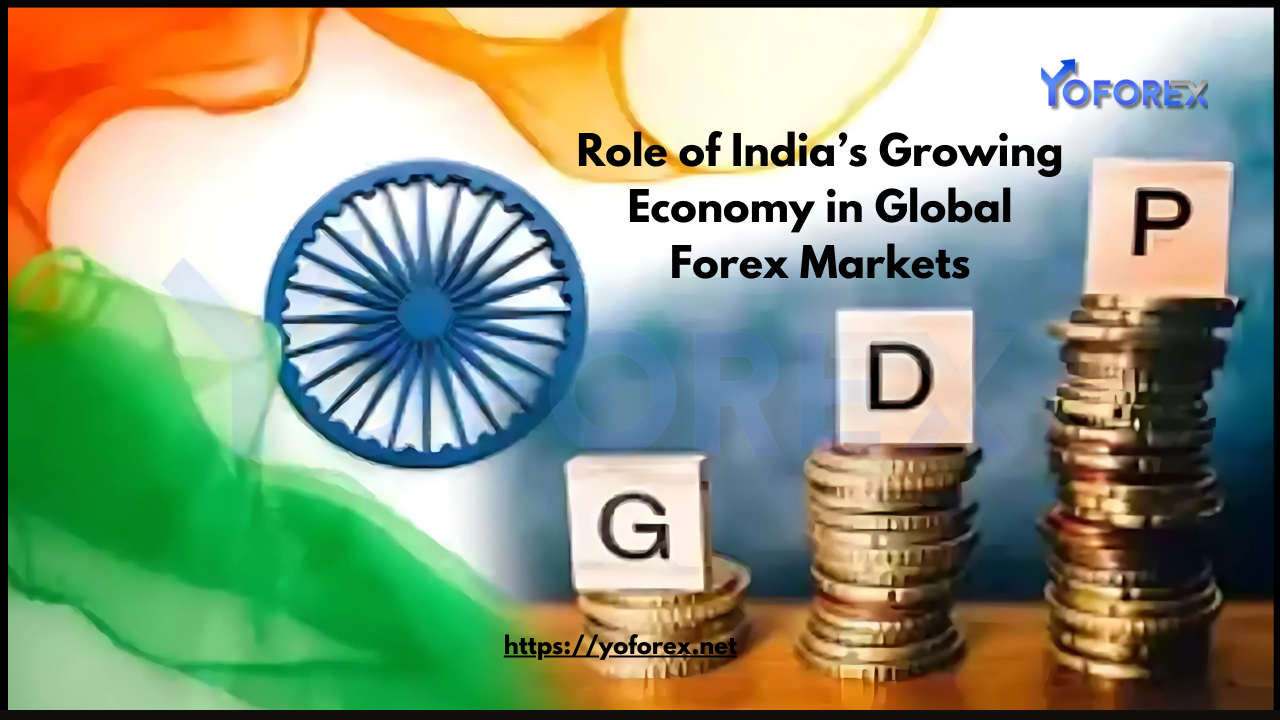India’s economy has emerged as a beacon of resilience and growth in the global economic landscape. With a projected GDP growth rate of 6.6% in 2025, driven by robust private consumption, investment, and export growth, India is poised to play an increasingly significant role in global forex markets. This blog explores how India’s economic expansion influences global currency dynamics, the factors driving its forex market participation, and the challenges and opportunities it faces in the international financial arena.
India’s Economic Growth: A Catalyst for Forex Market Influence
India’s economic growth story is underpinned by several key factors:
- Robust Domestic Demand: Private consumption, a cornerstone of India’s GDP, continues to expand, supported by a young and growing middle class. This domestic demand not only fuels economic activity but also strengthens the Indian rupee (INR) by reducing reliance on external financing.
- Investment and Infrastructure Development: The government’s focus on capital expenditure, particularly in infrastructure, has attracted both domestic and foreign investments. Projects under the National Infrastructure Pipeline (NIP) and initiatives like the Production-Linked Incentive (PLI) scheme have enhanced India’s appeal as an investment destination, boosting forex inflows.
- Export Growth: India’s export sector, particularly in pharmaceuticals, electronics, and IT services, has shown remarkable resilience. Strong export performance contributes to a favorable trade balance, supporting the rupee’s stability in forex markets.

These factors collectively enhance India’s economic credibility, making the rupee an increasingly important currency in global forex markets.
India’s Role in Global Forex Markets
- Currency Stability and Volatility: The Indian rupee has historically been subject to volatility due to external shocks, such as fluctuating oil prices and geopolitical tensions. However, India’s growing forex reserves, which stood at over $600 billion in 2024, provide a buffer against such volatility, ensuring greater stability in the currency.
- Foreign Direct Investment (FDI) and Portfolio Flows: India remains a preferred destination for FDI, particularly in technology, renewable energy, and manufacturing. Additionally, portfolio investments in Indian equities and bonds have surged, driven by the country’s strong growth prospects. These inflows bolster the rupee’s value and increase its trading volume in global forex markets.
- Remittances and Current Account Balance: India is the largest recipient of remittances globally, with inflows exceeding $100 billion annually. These remittances, along with a narrowing current account deficit, contribute to forex reserves and support the rupee’s strength.
Challenges and Risks
Despite its growing influence, India faces several challenges in the global forex markets:
- Geopolitical and External Risks: Global economic uncertainties, such as US policy shifts and trade tensions, can impact India’s export performance and capital flows. For instance, a strengthening US dollar or rising tariffs could exert pressure on the rupee.
- Inflation and Monetary Policy: While India’s inflation is projected to moderate to 4.3% in 2025, persistent inflationary pressures in key sectors like food and energy could limit the Reserve Bank of India’s (RBI) ability to cut interest rates, affecting currency stability.
- Structural Issues: India’s manufacturing sector, though growing, still lags behind global peers. Addressing structural bottlenecks, such as labor market inefficiencies and infrastructure gaps, is crucial for sustaining economic growth and forex market stability.
Opportunities for Enhanced Forex Market Participation
- Digital Transformation and Fintech: India’s digital revolution, exemplified by the Unified Payments Interface (UPI) and rapid fintech adoption, has streamlined cross-border transactions and enhanced forex market efficiency. This digital infrastructure positions India as a leader in innovative financial solutions.
- Global Trade Diversification: India’s participation in regional trade agreements and initiatives like the “China plus one” strategy can diversify its export markets, reducing dependency on any single region and enhancing forex inflows.
- Sustainable Investments: India’s commitment to renewable energy and green technologies attracts ESG (Environmental, Social, and Governance) investments, which are increasingly influential in global forex markets.
Conclusion
India’s growing economy is reshaping its role in global forex markets. With robust domestic demand, strong export performance, and significant forex reserves, the Indian rupee is becoming a more prominent player in international finance. However, challenges such as geopolitical risks, inflationary pressures, and structural inefficiencies must be addressed to sustain this momentum. By leveraging digital transformation, diversifying trade, and attracting sustainable investments, India can further enhance its influence in global forex markets, contributing to a more balanced and resilient global financial system.
As India continues its journey toward becoming a $5 trillion economy, its role in global forex markets will undoubtedly grow, offering new opportunities and challenges for investors, policymakers, and market participants alike.
Stay Updated & Download: https://yoforex.net/role-of-indias-growing-economy-in-global-forex-markets/
😎 Happy Trading 😎

